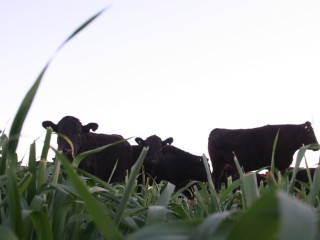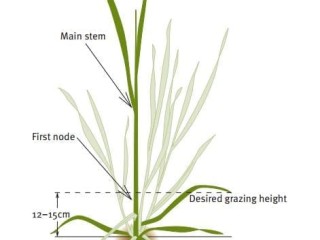 While anecdotal reports point to expanded oats plantings this year, due largely to lower wheat prices, one the country’s largest seed suppliers says seeds sales tell a different story.
While anecdotal reports point to expanded oats plantings this year, due largely to lower wheat prices, one the country’s largest seed suppliers says seeds sales tell a different story.
Brad Jamieson, northern region sales manager for Pacific Seeds based in Toowoomba, said sales of proprietary forage oats lines this year were well down last year’s reduced levels.
“My best guess is that the whole oats industry is back probably 30pc on last year, and we’re probably 40-50pc back on two to three years ago when we were selling big tonnages,” he said.
“There is a lot more feed out there, there are a lot more public lines of oats getting traded, and people aren’t just putting as much in the ground because season has been quite good.”
The area planted to oats has totalled up to 80,000-90,000 hectares in drier years, but was back to around 50,000 ha last year, Mr Jamieson’s estimated.
This year’s planting is likely to total around 30,000ha, he believes, based on proprietary seed sales.
That estimate does not take into account the difficult to measure “public” plantings that occur when farmers plant seed kept from previous years or bought from other farmers outside the proprietary system.
Mr Jamieson, speaking from the FarmFest field day at Toowoomba yesterday, said seasonal conditions and the high availability of low protein feed wheat and sorghum were key reasons for the lower plantings.
“There is a fair bit of grass in the paddock, the spring/summer season has been very good,” he said.
“There is a lot Rhodes and Setaria and Buffel grass, so in terms of oats sales we’re fighting against the elements so to speak.”
Also impacting the oats equation was the lure of alternative winter crops this year, with higher chick pea prices encouraging increased plantings of the pulse crop this winter.
Mr Jamieson said sales of all forage seeds had been declining every year for the past three years due to improved seasons, but would turn around when seasons dried off again.
Recent rain had sparked a small run on oats sales, he said.
 The 2012 Forage Oat Variety Guide produced by the Queensland Department of Agriculture, Fisheries and Forestry and Meat and Livestock Australia provides the following tips on growing oats for forage:
The 2012 Forage Oat Variety Guide produced by the Queensland Department of Agriculture, Fisheries and Forestry and Meat and Livestock Australia provides the following tips on growing oats for forage:
- Intermediate and late maturing varieties remain vegetative until late in the season and provide a longer duration of grazing for livestock.
- Optimum planting time for forage oats is from mid-March to June in southern Queensland, and early April to June in Central Queensland. Planting too early or too late can reduce forage yield.
- The recommended planting rates are 40–60 kg/ha in southern Queensland and 25–40 kg/ha in Central and western Queensland. Planting rates should be adjusted for germination, seed size and percentage establishment in the field. There are approximately 50 000 seeds per kilogram, but always check the seed container for the correct seed size and germination rate.
- The optimum soil temperature for the germination and establishment of oats is between 15 °C and 25 °C. Avoid planting into warm or hot soils as soil temperatures above 25 °C will reduce emergence. Avoid planting before the start of April in Central Queensland.
- Oat seed is best sown at 5–7.5 cm depth, in rows spacing 18–25 cm apart, into moist soil in a well-prepared seedbed.
- Ensure the crop receives adequate fertiliser and weed control. Nutrition requirements and fertiliser rates are similar to those recommended for wheat. An application of nitrogen after grazing (20–40 units of nitrogen per hectare) will increase the speed of plant recovery, reduce tiller death and increase overall forage yield.
- If possible, first grazing should occur when secondary roots are well established and before stems begin to elongate.
- Where possible, only graze down to the height of the lowest stem node—about 12–15 cm (5–6 inches) above ground level. Avoid hard grazing as this can remove the growing points and delay subsequent regrowth (see figure above left).
